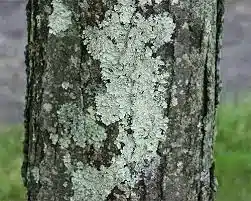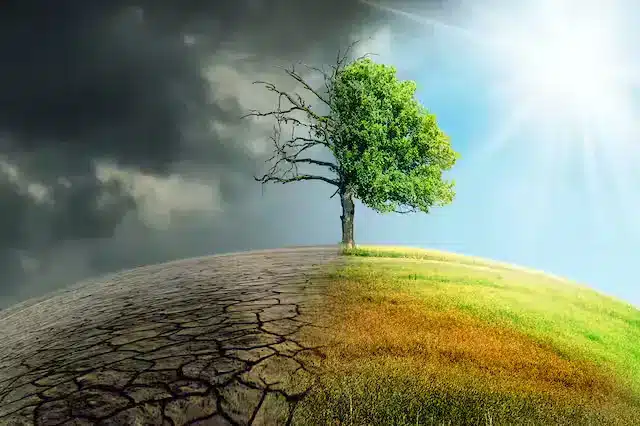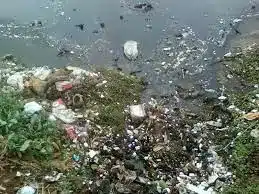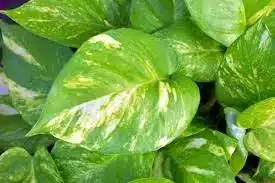Environment And Ecosystem
- The environment is the natural component in which biotic (living) and abiotic (non-living) factors interact among themselves and with each other. These interactions shape the habitat and ecosystem of an organism.
- In a biological sense, the environment constitutes the physical (nutrients, water, air) and biological factors (biomolecules, organisms) along with their chemical interactions (chemical cycles – carbon cycle, nitrogen cycle etc.) that affect an organism or a group of organisms.
- All organisms are dependent on the environment to carry out their natural life processes and to meet their physical requirements (food, energy, water, oxygen, shelter etc.).
Habitat
- Habitat is the physical environment in which an organism lives (address of an organism).
- Many habitats make up the environment.
- A single habitat may be common for more than one organism which have similar requirements.
- For example, a single aquatic habitat may support a fish, frog, crab, phytoplankton and many others.
- The various species sharing a habitat thus have the same ‘address’. E.g. Forest, river etc.
Difference between Habitat and Environment
- A habitat always has life in it, whereas the environment does not necessarily have life in it.
- All habitats are environments, but all environments are not habitats.
- A habitat is always a preference of one species.
- An environment could be a preference of many species that could eventually become many habitats.
- Usually, the environment governs the properties of a habitat, but not vice versa.
Ecosystem
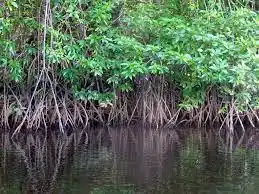
- An ecosystem can be visualised as a functional unit of nature, where living organisms (producers, consumers, and decomposers) interact among themselves and also with the surrounding physical environment.
- An ecosystem can be of any size but usually encompasses specific and limited species. E.g. Aquatic Ecosystem. (This is how ecosystem is different from Environment)
- In the ecosystem, biotic and abiotic components are linked together through nutrient cycles and energy flows.
- Everything that lives in an ecosystem is dependent on the other species and elements that are also part of that ecological community.
- If one part of an ecosystem is damaged or disappears, it has an impact on everything else.
Classification of Ecosystems
- Forest, grassland and desert are some examples of terrestrial ecosystems; pond, lake, wetland, river and estuary are some examples of aquatic ecosystems.
- Crop fields and an aquarium are human-made ecosystems.
Difference between Ecology, Environment & Ecosystem
- Ecology is the study of interactions between organisms, organisms and the surroundings occurring within an ecosystem or environment.
- An ecosystem is a functional unit of the environment (mostly biosphere).
- An environment is a group of ecosystems.
- Environment : Can be almost everything or a small region.
- Habitat : Area where an organism lives.
- Biosphere : The region on earth that supports life.
- Ecosystem : Producers, Consumers, Decomposers and their relationships (tiny environment). It is the functional unit of the environment.
Components of an Ecosystem
The components of the ecosystem are categorized into abiotic or non-living and biotic or living components. Both the components of the ecosystem and environment are the same.
Abiotic Components
Abiotic components are the inorganic and non-living parts which act as major limiting factors.
Light
- The spectral quality of solar radiation is important for life.
- The UV component of the spectrum is harmful to many organisms.
Rainfall
- Majority of biochemical reactions take place in an aqueous medium.
Temperature
- A few organisms can tolerate and thrive in a wide range of temperatures (they are called eurythermal).
- A vast majority of them are restricted to a narrow range of temperatures (stenothermal).
Atmosphere
- 21% oxygen helps in the survival of many organisms; 78% nitrogen prevents spontaneous combustion and 0.038% carbon dioxide helps primary producers in the synthesis of carbohydrates.
Organic compounds
- Proteins, carbohydrates, lipids etc. are essential for energy transfer in the living world.
Inorganic compound
- Carbon, carbon dioxide, water, sulphur, nitrates, phosphates, and ions of various metals are essential for organisms to survive.
Altitude
- Vertical zonation of vegetation is caused due to altitude.
- Change in temperature with altitude is a limiting factor.
Buffering capacity of the earth
- A a neutral pH (pH of 7) is maintained in the soil and water bodies due to the buffering capacity of earth.
- The neutral pH is conducive for the survival and sustenance of living organisms.
Salinity
- Some organisms are tolerant of a wide range of salinities (euryhaline).
- Others are restricted to a narrow range of salinities (stenohaline).
Effect of Abiotic Components on Terrestrial Primary Producers (Plants)
Light
- Extremely high intensity favours root growth than shoot growth which results in increased transpiration, short stem, smaller thicker leaves.
- On the other hand, low intensity of light retards growth, flowering and fruiting.
- When the Intensity of light is less than the minimum, the plants cease to grow due to the accumulation of CO2 and finally die.
- Of the visible part of the spectrum, only red and blue are effective in photosynthesis.
- Plants grown in blue light are small, red light results in elongation of cells (etiolated plants).
- Plants grown in ultraviolet and violet light are dwarf.
Frost
- Frost results in freezing the soil moisture.
- The plants are killed due to increased transpiration when their roots are unable to supply moisture.
- Water in the intercellular spaces of the plant gets frozen into ice. This results in increasing concentration of salts and dehydration of cells.
- Also, frost leads to the formation of canker (various plant diseases with similar symptoms caused by a wide range of fungi, bacteria, and viruses).
Snow
- Snow acts as a blanket, prevents a further drop in temperature and protects seedlings from excessive cold and frost.
- Accumulation of snow on tree parts can break the branches or even uproot the tree.
- Snow shortens the period of vegetative growth.
Temperature
- High-temperature results in the death of plant due to coagulation of protoplasmic proteins (some bacteria can survive high temperatures because of their protoplasmic proteins that don’t coagulate at normally high temperatures).
- High temperature disturbs the balance between respiration and photosynthesis.
- It also results in desiccation of plant tissues and depletion of moisture.
Biotic Components
Primary producers or Autotrophs (self-nourishing)
- Primary producers are green plants, certain bacteria and algae that carry out photosynthesis.
- In the aquatic ecosystem, microscopic algae (plankton) are the primary producers.
Consumers or Heterotrophs or Phagotrophs (other nourishing)
- Consumers are incapable of producing their own food.
- They depend on organic food derived from plants, animals or both.
- Consumers can be divided into two broad groups namely micro and macro consumers.
Macro consumers
- Herbivores are primary consumers which feed mainly on plants. E.g. sheep, rabbit, etc.
- Secondary consumers feed on primary consumers. E.g. wolves, dogs, snake, etc.
- Carnivores which feed on both primary and secondary consumers are called tertiary consumers. E.g. lion (can eat wolves), snakes etc.
- Omnivores are organisms which consume both plants and animals. E.g. man, bear, pig, etc.
Micro consumers or Saprotrophs (decomposers or osmotrophs)
- They are bacteria and fungi which obtain energy and nutrients from dead organic substances (detritus).
- Earthworm and certain soil organisms (such as nematodes, and arthropods) are detritus feeders and help in the decomposition of organic matter and are called detrivores.
Also refer :
- Download the pdf of Important MCQs From the History Of Ancient India
- List Of Important Inscriptions In India
- For more articles on the environment, click here.

